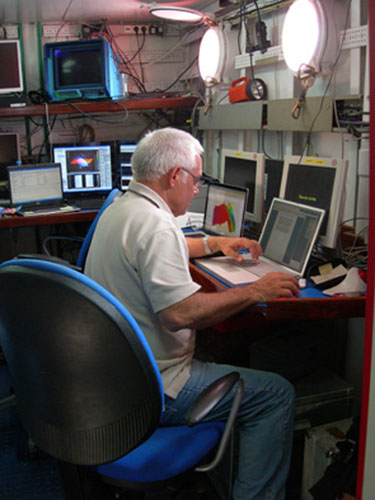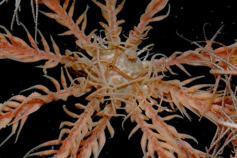You are here
Cañón de Creus Campaign - September 2009 - CSIC # Message 1
Mensaje 1
After waiting one day at the port, we can finally sail. We were unable to sail as scheduled due to the weather conditions, which are typical this time of year in the northwest Mediterranean. The NE winds turn into strong tramontane in the area of Cape Creus.
Now we are sailing northwards, hoping that the wind abates as we near the study area and we can start the scheduled work plan. Meanwhile, we are getting the prospection equipment, the nets to fish the plankton or the submarine robot ready. We are also finishing the installation of the lab equipment. This is a very important time to instruct the young researchers who participate in an oceanographic campaign for the first time. During maximum activity there will be no chance to learn the methods, nor margin of error. These first hours are essential to have all the instruments ready, and so that the people have a clear understanding of their tasks, that is, that we are a team.
One of the objectives of this campaign is to study the marine platform’s bottom between the Cape Creus coast and the canyon head. This area will be of great importance in the future protected sea area. We will need to collect the maximum amount of relevant data to prove it and to understand its current level of preservation. This is essential to be able to show that it is necessary to protect it, and to provide a specific protection plan.
We already performed some prospections in the study area this summer, and we were able to observe some benthonic communities which are currently considered a key element in the dynamics of sea life. They are the communities dominated by organisms such as crinoids or pennatulaceans, which concentrate on the substratum, and attract many other organisms looking for shelter and food. These communities are known as “nurseries” because the larval and young phases of fish and crustaceans reside on them for a while until they become adults. Then, they return to their original habitat. The preservation of these bottoms or communities is essential for the commercial species to finish their life cycle. Our goal for tomorrow early in the morning is to collect samples and prospect with a camera, which includes the robot. For now, we send you some pictures taken a couple of weeks ago in the shallowest area of these communities.
At last, after waiting one day at the port, we were able to sail. The NE winds, which turned into a strong tramontane (up to 6 knots, some km/h) in Cape Creus, prevented us from sailing. It is a typical weather condition in the Northwest Mediterranean Sea at this time of the year. Nothing unusual.
(Posted 22 September 2009)













